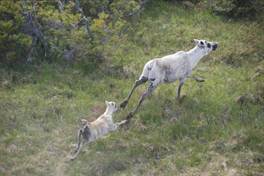|
The Integrative Wildlife Conservation lab at Trent University uses a diversity of tools, approaches, and taxa to answer today's most pressing ecological and conservation problems. We are particularly interested in understanding the mechanisms underlying changes in distribution and abundance, the role of abiotic and biotic factors on individuals and populations, and the likely future change in structure and function of communities and ecosystems.
See below for more information on a selection of our ongoing research themes. |
Predator-Prey InteractionsOur lab has a longstanding interest in predator-prey relationships, as well as related interactions between parasites and hosts, and herbivores and plants. We address questions in predator-prey ecology either using experimental studies involving tadpoles and their predators, or through field studies with a variety of mammal, bird and reptile/amphibian species.
|
Population EcologyOur work in population ecology broadly encompasses assessment of the sources of population growth and decline. This research involves a range of methods and systems to estimate survival and productivity, as well as analysis of population time series towards understanding patterns of numerical growth and regulation.
|
Conservation BiologyA fair bit of our research involves questions of applied relevance, both for logistical reasons (it is easier to find funds to work on mammals than amphibians!), as well as because for many of us our interest in ecology grew directly out of a desire to make a difference for populations and species under duress. Not surprisingly, our research in the realm of conservation biology involves mostly the big furry species, although we recently started working on smallmouth salamanders (Endangered) and Blanding's turtles (Threatened).
|




